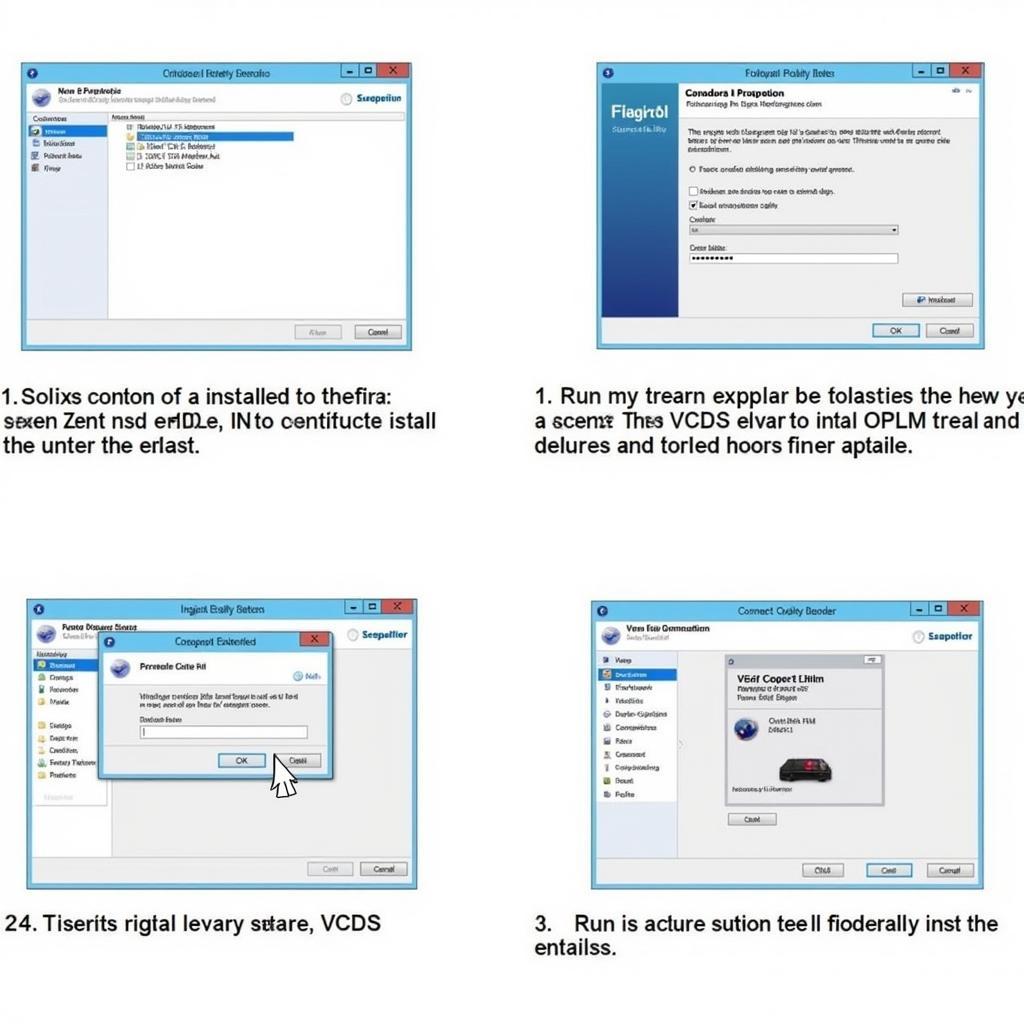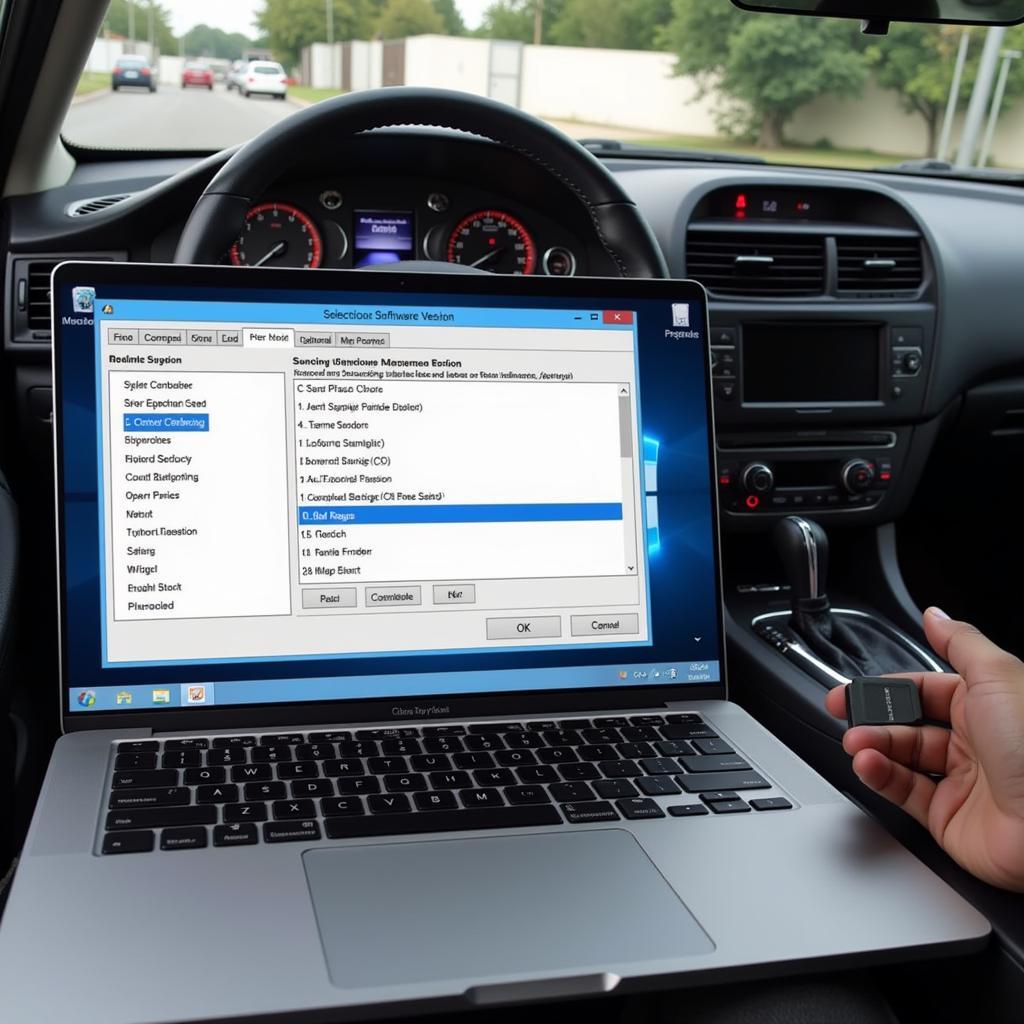VCDS remote adaptation offers a powerful way to modify a vehicle’s control units from a distance. This guide explores the intricacies of remote adaptation, its benefits, potential challenges, and best practices for successful implementation. We’ll delve into its applications for various vehicle makes and models, focusing on how it simplifies diagnostics and programming.
Similar to vcds bmw, remote adaptation provides specialized functionalities for specific vehicle brands. This technology allows technicians to access and modify vehicle settings without physical access, offering significant advantages in terms of time and cost savings. Understanding the potential and limitations of VCDS remote adaptation is crucial for any modern automotive technician.
Understanding VCDS Remote Adaptation
What is VCDS remote adaptation, and why is it so important in today’s automotive world? Simply put, it’s the ability to use the VCDS software to change coding and adaptations within a vehicle’s control modules remotely. This eliminates the need for a technician to be physically present with the vehicle, making diagnostics and programming much more efficient. Remote adaptation has revolutionized vehicle diagnostics, offering a more flexible and streamlined approach.
Benefits of Remote Adaptation
The advantages of using VCDS remote adaptation are numerous. It drastically reduces downtime for customers, as technicians can diagnose and resolve issues quickly, often without needing to tow the vehicle. For businesses, this translates to significant cost savings related to travel and on-site visits. Additionally, remote adaptation enables faster turnaround times, improving customer satisfaction and optimizing workflow.
Challenges of Remote Adaptation
While powerful, VCDS remote adaptation is not without its challenges. Stable and reliable internet connectivity is essential for both the technician and the vehicle. Security is another paramount concern, as unauthorized access to vehicle systems can have serious consequences. Therefore, robust security protocols and authentication methods are crucial for safe and effective remote adaptation.
VCDS Remote Adaptation: Practical Applications
How can you use VCDS remote adaptation effectively in your daily operations? From simple coding adjustments to complex module programming, the applications are vast and constantly evolving. Let’s explore some common scenarios:
Coding and Adaptation for Specific Modules
VCDS remote adaptation allows technicians to modify various module settings, including those related to comfort, convenience, and even performance. For instance, adjusting lighting configurations, enabling/disabling certain features, and customizing driver assistance systems can all be performed remotely.
Troubleshooting and Diagnostics from Afar
Remote diagnostics can significantly streamline the troubleshooting process. Technicians can access fault codes, monitor live data, and perform guided tests remotely, allowing for quicker issue identification and resolution. This is particularly useful in situations where physical access to the vehicle is difficult or time-consuming, as seen in remote or inaccessible locations. This resonates with the functionalities offered by vcds subaru, which allows for model-specific diagnostics.
Remote Key Programming and Other Security Functions
VCDS remote adaptation can also be utilized for security-related functions like remote key programming, immobilizer adaptation, and other security access tasks. This eliminates the need for the customer to visit a workshop for these often time-sensitive procedures, offering significant convenience. This is similar to the principles behind vcds remote key programming, which focuses on key-related procedures.
Best Practices for VCDS Remote Adaptation
Implementing VCDS remote adaptation successfully requires careful planning and adherence to best practices. Ensure a secure connection, use updated software, and always follow the manufacturer’s guidelines. Proper training and understanding of the vehicle’s systems are also crucial.
Similar to the detailed diagnostics possible with vcds audi a5, VCDS remote adaptation also requires a thorough understanding of the specific vehicle model. This ensures accurate diagnosis and prevents unintentional modifications that could negatively impact the vehicle’s performance. Another key aspect is understanding the intricacies of vcds optical bus diagnostics for a comprehensive approach to vehicle diagnostics.
Conclusion
VCDS remote adaptation is transforming the automotive industry, providing significant benefits for both technicians and vehicle owners. By understanding its potential, addressing the challenges, and adhering to best practices, you can leverage this powerful technology to optimize your diagnostic and programming workflow, enhancing efficiency and customer satisfaction.
FAQ
- What are the system requirements for VCDS remote adaptation?
- How secure is remote adaptation?
- Can all vehicle models be remotely adapted?
- What type of internet connection is required for remote adaptation?
- Is special training needed to perform remote adaptation?
- What are the limitations of remote adaptation?
- How much does VCDS remote adaptation cost?
Need help? Contact us via Whatsapp: +1 (641) 206-8880, Email: CARDIAGTECH[email protected] or visit us at 276 Reock St, City of Orange, NJ 07050, United States. We offer 24/7 customer support.


